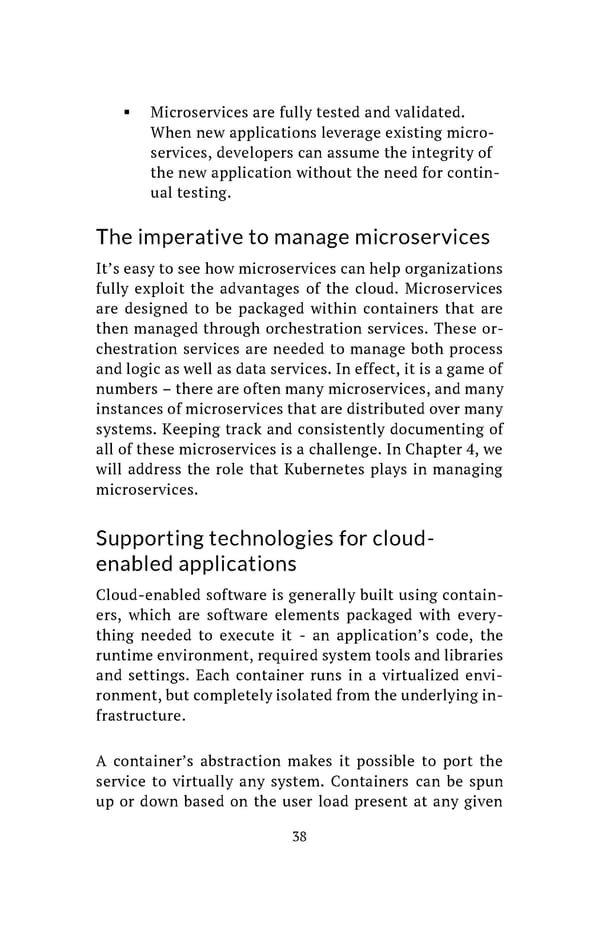▪ Microservices are fully tested and validated. When new applications leverage existing micro- services, developers can assume the integrity of the new application without the need for contin- ual testing. The imperative to manage microservices It’s easy to see how microservices can help organizations fully exploit the advantages of the cloud. Microservices are designed to be packaged within containers that are then managed through orchestration services. These or- chestration services are needed to manage both process and logic as well as data services. In effect, it is a game of numbers – there are often many microservices, and many instances of microservices that are distributed over many systems. Keeping track and consistently documenting of all of these microservices is a challenge. In Chapter 4, we will address the role that Kubernetes plays in managing microservices. Supporting technologies for cloud- enabled applications Cloud-enabled software is generally built using contain- ers, which are software elements packaged with every- thing needed to execute it - an application’s code, the runtime environment, required system tools and libraries and settings. Each container runs in a virtualized envi- ronment, but completely isolated from the underlying in- frastructure. A container’s abstraction makes it possible to port the service to virtually any system. Containers can be spun up or down based on the user load present at any given 38
 Building Cloud Native Apps Painlessly Page 42 Page 44
Building Cloud Native Apps Painlessly Page 42 Page 44